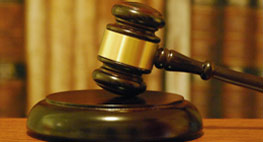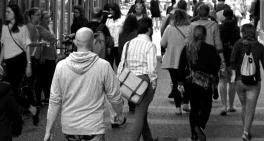Supreme Court hanging up phone, back to in-person arguments
Recent Cases
The justices are putting the “court” back in Supreme Court. The high court announced Wednesday that the justices plan to return to their majestic, marble courtroom for arguments beginning in October, more than a year and a half after the in-person sessions were halted because of the coronavirus pandemic.
The justices had been hearing cases by phone during the pandemic but are currently on their summer break. The court said that oral arguments scheduled for October, November and December will be in the courtroom but that: “Out of concern for the health and safety of the public and Supreme Court employees, the Courtroom sessions will not be open to the public.”
“The Court will continue to closely monitor public health guidance in determining plans,” the announcement said.
The court said that while lawyers will no longer argue by telephone, the public will continue to be able to hear the arguments live. Only the justices, essential court personnel, lawyers in the cases being argued and journalists who cover the court full-time will be allowed in the courtroom. The court that returns to the bench is significantly different from the one that left it.
When the justices last sat together on the bench at their neoclassical building across the street from the U.S. Capitol on March 9, 2020, Justice Ruth Bader Ginsburg was the court’s most senior liberal and conservatives held a narrow 5-4 majority. But Ginsburg died in September 2020, and her replacement by conservative Amy Coney Barrett in the final days of the Trump administration has given conservatives a significant 6-3 majority.
Because of the pandemic, Barrett has yet to be part of a traditional courtroom argument, with the justices asking questions of lawyers in rapid succession, jockeying for an opening to ask what’s on their minds. The arguments the court heard by telephone were more predictable and polite, with the justices taking turns asking questions, one by one, in order of seniority. That often meant the arguments went longer than their scheduled hour.
It also meant that lawyers and the public heard from the previously reticent Justice Clarence Thomas in every telephone argument. Before the pandemic Thomas routinely went years without speaking during arguments and had said he doesn’t like his colleagues’ practice of rapid-fire questioning that cuts off attorneys. “I don’t see where that advances anything,” he said in 2012.
One change from the remote arguments will stay for now. The justices said they will continue their practice during the pandemic of allowing audio of oral arguments to be broadcast live by the news media. Before the pandemic, the court would only very occasionally allow live audio of arguments in particularly high profile cases.
That meant that the only people who heard the arguments live were the small number of people in the courtroom. The court releases a transcript of the arguments on the same day but, before the pandemic, only posted the audio on its website days after.
Related listings
-
Sonnet 54 Preserved Roses in Los Angeles
Recent Cases CaliforniaWomen’s day is coming in a few months. Everyone prepares for it in advance: girls choose outfits, and men are looking for options for a gift. We know what question immediately pops up: “What to give on such a day?” Flowers fo...
-
4 tribes sue over Oklahoma gambling compacts with 2 others
Recent Cases 08/01/2020Four Oklahoma tribes are asking a federal court to void gambling compacts between the state of Oklahoma and two other tribes ? agreements that the Oklahoma State Supreme Court recently invalidated.The Cherokee, Chickasaw, Choctaw and Citizen Potawato...
-
Supreme Court: Justices healthy and trying to stay that way
Recent Cases 03/21/2020The Supreme Court reported Friday that the nine justices are healthy and trying to stay that way.To that end, when the court held its regularly scheduled private conference Friday morning, some of the justices participated remotely, and those who wer...

What Is Meant by ‘No-Fault’ Workers’ Compensation in Illinois?
If you were injured in a work-related accident and have been researching workers’ compensation, you may have seen it described as a “no-fault” system. One of the most important things to understand about the workers’ compensation system in Illinois is that it is based on a “no-fault” system. What does this mean, exactly?
Most employers in Illinois are required by law to have workers’ compensation insurance. And the workers' compensation in Illinois is a “no-fault” system, which means that any worker who has been hurt on the job is entitled to workers' compensation benefits. If you have been hurt on the job, you are entitled to workers’ compensation benefits no matter whose fault the accident was.
A no-fault insurance system, such as workers’ comp, works by paying claims regardless of who is to blame for an accident. This provides an important layer of protection for injured workers, sparing them from having to through additional litigation and the through the additional burden of proving who was at fault before receiving benefits.
In Illinois, even though you don’t have to prove that your injury was your employer’s fault, you do have to prove that your injury happened at work or as a result of work. If you would like help to file your workers' compensation claim, Krol, Bongiorno, & Given’s experienced workers' comp lawyers are here to help. With over 60 years of combined legal experience, the KBG law firm is a leader in the field of workers’ compensation law and we have earned the reputation as aggressive advocates for injured workers before the IWCC.




